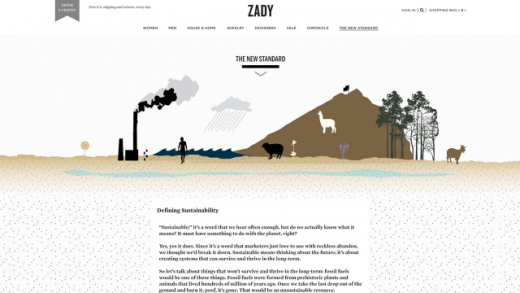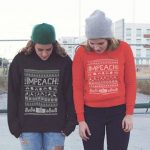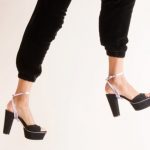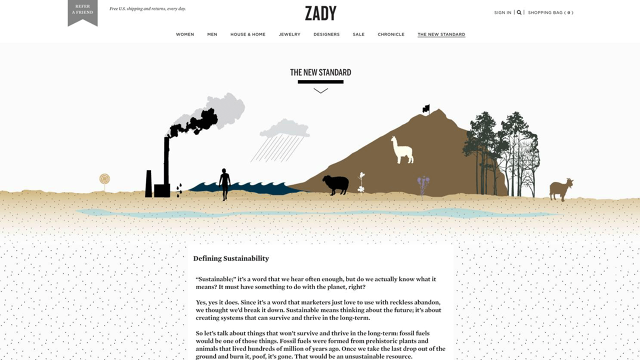Zady desires To decelerate quick model With a new Sustainability same old
Your cotton T-shirt required more than 2,700 liters of water to produce—and new trade standards would you should definitely knew that.
September 24, 2015
Zady, the sustainability-centered style firm known for its ethically sourced garments and equipment, desires to assist other fashion brands transform clear in their sourcing, too.
Zady just launched the new usual—a roadmap to the pain points of the fabric industry and an open-sourced set of guidelines for fashion labels to up their antes in sustainability and human rights. while there is no scarcity of analysis concerning the harm the attire business does to the atmosphere and populations in creating countries (where many of the world’s clothes are manufactured), the Zady crew realized it wasn’t multi function place.
“We have been uncovering all of these concerns associated to type and local weather, and type and air pollution, and type in our water, and model in our oceans, and style and our forests,” says Zady cofounder Maxine Bédat. “but there wasn’t one imperative position that shall we go to to search out all of this. It used to be this disparate data, so no person may paint an entire picture as to what one piece of apparel’s affect was on the entire totally different components.”
So after talking to researchers from places just like the natural resources security Council and compiling info and figures on the problematical ripple results of fashion, Zady created a roadmap for the place garments come from for shoppers that launches lately, and an trade-facing instrument kit for model producers in order to launch next month.
the brand new usual
Zady itself has been applauded for its transparency with regards to fashion manufacturing.
last year we integrated the corporate on our Most modern corporations in Retail list for the smaller sustainably and ethically sourced model brands it bought. Late closing year, Zady launched its own unique line, too.
“when you find yourself creating a T-shirt or jeans, or various non-artisanal issues, it is a multistep course of,” Bédat says.

So Zady made up our minds to make its new same old function like a map. style customers and producers alike can apply a T-shirt’s manufacturing from cotton farming to dyeing to sewing.
“that you may draw the sector and show how the different things are interconnected and in that method to actually show to the consumer for the primary time the impact that they’ve,” Bédat says.
consistent with the Institute of Sustainable communique, a single cotton T-shirt uses 2,700 liters of water and a 3rd of a pound of chemical compounds to produce. Globally, cotton production is chargeable for 25% of all pesticide use, and 20% of industrial water air pollution comes from the therapy and dyeing of textiles.
Add to that the clothes that we waste (each American throws away about 70 kilos of clothes a yr) and the human labor-rights crises inside of shadow factories like Rana Plaza in Bangladesh, which used to be the site of a 2013 building give way that killed more than 1,a hundred people—and type abuses are on par with the crises of car and agriculture manufacturing. in fact, the fabric business is 2nd simplest to agriculture in contributions to international water air pollution, in step with the Institute of Sustainable communication.
but still, the dialog around options for cloth business pollution are not as robust as these around agriculture and vehicles, Bédat says.
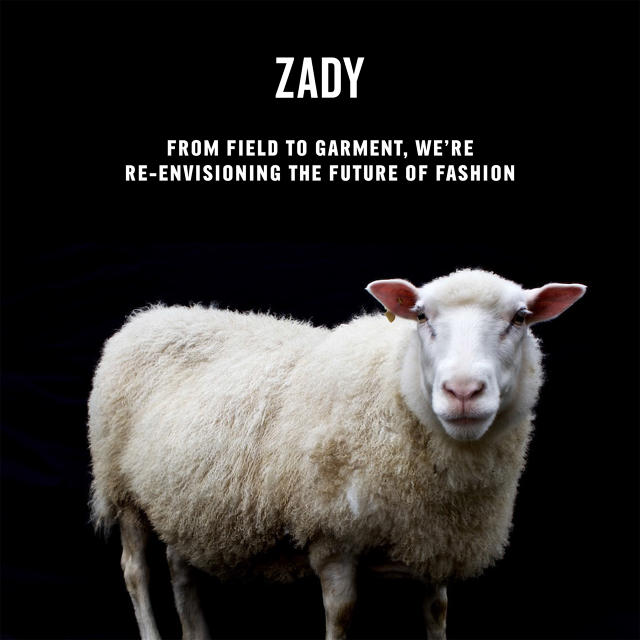
along with laying out the stats and considerations associated with every step of the process in its “map,” the new same old offers extra context for each and every pain point with a click-thru narrative that takes the person from an alpaca to fabric-inflicted soil air pollution. And its industry instrument kit will embody pointers for the whole lot from perfect water treatment practices (ninety% of wastewater in growing countries flows untreated into water our bodies used for ingesting water), to which dyes to use for natural certification, to tips for cell technology that enables factory workers to anonymously file abuses.
“That final stage of the production is where many of the moral and social considerations come into location, as a result of that also takes a human hand to sew something,” Bédat says.

changing Behaviors
while this early generation of the standard aims to draw consideration to the basis causes of the textile industry’s affect on environment and populations, it is nonetheless in early phases. sooner or later, Bédat hopes to give model its own LEED-like criteria and instruments for improving style from farm to design to client. there is not any government company or board of 20,000 experts approving the new same old’s measures or issuing certifications. it is all free and open-sourced.
Bédat says she hopes it’s a step against getting more fashion manufacturers occupied with how they can fortify their part of the attire ecosystem—and for them to chime in on what needs to be accomplished to further the new same old’s reach.
“identical to Tesla, they’re open-sourced. that you would be able to make a Tesla automotive if you wish to. That, to us, is the future. We’re not competing on sustainability. that’s silly—it is a disservice,” she says.
And simply as vital is getting shoppers engaged with the fashion map, as a result of lots of the trade’s impetuses for trade begin with the shopper.
“folks wish to be informed. that’s what i believe is exciting about our technology, specifically. there’s quite a lot of data round us, and we need to learn about it. We need to be smart and sophisticated about it. i am simply excited to have that knowledge in the market, as a result of it is ultimately consumers that have probably the most affect,” Bédat says. “We could have this pretty thing and delightful, sustainable apparel—but if no person desires to reinforce it, and if no one’s asking manufacturers for that knowledge, nothing’s going to change.”
fast company , learn Full Story
(96)

